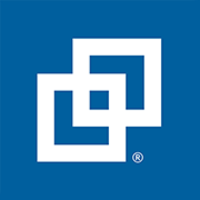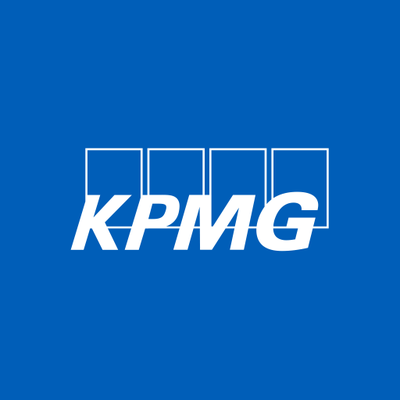The sun is beating down on the sandy beach of a deserted tropical island. Bathed in sweat and grime, you slowly cook in the sun-feeling your skin peel, crackle, and curl like plastic film over a frozen dinner.
Your comrades are reluctantly swallowing roaches with wriggling legs-the only available food to satisfy the gnawing hunger.
Yet, at that very moment, a pint of ice cream appears on the sand.
I love numbers and data more than I love ice cream, but the internship sphere is as bereft of data as a deserted tropical island is of Ben and Jerry’s. Therefore, when I happened upon Fog Creek Software’s internship program data set, I felt as if I was served a pint of ice cream in the scorching heat of a deserted island. It’s an excellent metaphor for the lack of data in the internship space and the relief I felt upon seeing Fog Creek’s stats.
For those of you who are not yet avid fans, Fog Creek is an innovative software company whose ultimate goal is to provide the ideal climate for developers to create amazing software. They go to all lengths to do so-by giving developers everything from 20 outlets (!!) per desk, plasma televisions, and as many monitors as a developer’s heart desires.
Fog Creek is therefore serious about recruiting the best talent, as they invest so much time and energy in to each developer. A significant amount of new developer talent is hacking away in college-Fog Creek wants to find the best college developers, and give them positions.
Therefore, Fog Creek’s data sought to answer the question, “How can we recruit the best students possible?” with a focus on the college career fair recruiting experience.
Career fairs have always been a complete mystery to students. Should I schlep out to each one? Should I network? Should I wear a suit? Should I bring my resume and smack it down on every table that catches my eye?
The data was pretty exhaustive, and of course a rare gem in this sphere-we automatically thought about how it could help students.
How can students use this info to their best advantage at a career fair? How can students use it to get a highly competitive internship at a company like Fog Creek?
We broke down the numbers they offered, and took our questions straight to Anna Lewis, who handles recruiting at Fog Creek.
The Number of Applicants
Fog Creek saw a gigantic increase in their number of applicants over the last year, and divided application quantity by month. The spring has noticeably more applicants than any other season, this fall saw a large increase, and there is a consistent lull during the winter months.
We were so excited by this information: it’s just like knowing what time rush hour traffic happens, or when the line at Starbucks will be alarmingly long, right? Could this data help students apply during the lull period in applications, or during the fall, rather than the spring? Students who do so might receive more attention on their specific application.
We ran these theories by Anna.
What’s the reason behind the dramatic increase in applications this year?
ANNA: “Career fairs definitely bumped up our application numbers in the fall, when we visited 4 schools: Rutgers, Princeton, Carnegie Mellon, and Columbia. We didn’t visit career fairs during that period last year, which accounts for the major difference. Additionally, during the spring, I reached out to professors and college career services centers, who sent emails to their students, causing the enhanced spike in applications during that time. But notice that, while applications increased with our different recruiting tactics (career fairs and professor outreach) over the last year, the spike in applications is definitely greater in the spring for both years.”
Does it serve a student to apply during the December lull, rather than March or September?
ANNA: “No. We dedicate the same attention to each application regardless of when it comes in. Our hiring mantra is “smart and gets things done.” Plus “writes great code.” So that’s what we’re hoping to see evidence of when we get an application. And we’ve spent years building up a screening process – and tweaking it with each new round of applicants — that we think gives each application a fair shake:
1. A resume “rating.” Each student earns points for things like evidence of brains, passion, trying out hard-core technologies. We really try to humanize this process from start to finish.
2. A “code screen” over the phone, where the applicant demonstrates his or her ability to code.
3. A second “code screen.”
4. A day of at least six in-person interviews, each of which requires coding.
So, for us, coding ability is extremely important. Because we’re dedicated to this thorough screening process, it really makes no difference when you apply.”
Hiring developers puts an emphasis on measurable skill rather than the resume-yet, business and more qualitative positions, ensure that your resume is in shape and given to well-rested eyes!
How Do Applicants Hear of A Company?
While there are tons of different outlets that corporations use to publicize their opportunities, most students are learning of new companies and opportunities through web searches and career fairs. How can this help you?

Don’t be afraid to attend that career fair! While you may already know of plenty of companies and opportunities through InternMatch
and the web, career fairs could have hidden gems that you might not know of coming in. Yes, they’re valuable!
We also ran this theory by Anna.
ANNA: “Well, last year was our first year doing career fairs. And what we learned is that, just because career fairs got us more candidates, that didn’t mean they were getting us candidates who were the “right fit” for Fog Creek. Our primary recruiting focus, to be honest, is just doing what we do best – making great software and building a culture that’s ideal for software developers. In that sense, all of us Creekers are “recruiting” all the time, with every new product release and with every happy customer. That’s what attracts candidates who are smart, get things done, write great code, and are excited about our work.”
A company’s priority is different: it’s not the number of applications, or how the majority of applicants hear about them that’s important-what’s valuable is how internship hires hear about a company. While web searches and career fairs are popular, companies will focus on the most valuable outlets for recruiting rather than the most popular.

Fog Creek then broke down exactly what those “most valuable” outlets would be. This chart is incredibly informative for students, and we’ll point out the essentials. We’re focusing on the number that “got an offer” as compared to the number of resumes.
1. Career fair yield is pretty low.
Well, except for Columbia, for some reason-maybe the water? Regardless, we’re going to look at the total ratio of 6 offers for 139 resumes (all of the school’s quantities together.) Based on the number of resumes submitted for each school, offers are quite scarce. Therefore, the “networking” myth of a career fair can be dispelled! A student can assume that ‘showing up’ for a career fair doesn’t give anyone an undue advantage in the application process.
2. A web search/website review is the least effective outlet for exploring a company.
Yes, you might think that a website tells all-but it’s not enough. You need to learn about a company in a deeper manner than their website in order to tailor your resume and application appropriately. It’s now a fact, y’all-the data don’t lie: exploring and “getting to know” a company is more than simply looking over an “About Us.” 4/170 is a really low ratio!
3. Knowing someone in the company (a Creeker) or following relevant blogs and sites in the field is important, but not without skills, too.
Doing so shows dedication and knowledge of the space! Therefore, make sure you’re staying updated on the news in your discipline, and make sure that you have the skills to back that up. If you’re a developer, follow Hacker News and ensure that you’re meeting some interesting people. If you’re a businessperson, read the relevant publications (The Economist, TechCrunch, etc.) and make sure you’re learning skills to go along with that.
4. Being a fan of the CEO is the best idea ever.
If you’re a “Joel fan” (the famous CEO of Fog Creek), it shows that you have serious dedication to FogCreek mindset and ethos. If you’ve followed his blog, you’ve read his books, you’ve consequently followed the company trajectory-and the 4/67 ratio is the highest of them all.
Does this dedication really help with internship acquisition? We know it already makes you pretty cool…
Once again, we ran these theories by Anna.
“It’s all about whether you have passion for the work of your industry” she said, “When students are excited about their field, they find out what their favorite companies are and they engage with those communities.”
We agree. It’s not necessarily about how you apply, or whether you show up at a career fair or not–sustained interest in what a company does counts significantly more. While this isn’t any substitute for talent or skills, it’s a huge factor in increasing your chances of landing that internship!
Career fairs, in short, are not the be-all-end-all of an internship application process. You don’t have to come, you definitely don’t have to wear a suit and you don’t need to be the savvy student that chats with the recruiters with a big cheesy grin. There’s really no difference, at Fog Creek, between putting your resume on the table at a career fair and sending it in through their online system. “We’re really interested in quality applicants, no matter how they come in. But we’ve noticed that many of our quality applicants become our fans before applying for an internship.” Anna said.
Therefore, what do you take away from all of this data? How can you “hack” a career fair and increase your chances of getting an internship?
• Stand out at a career fair by being a real person! Career fairs are a great place to connect on a personal level with the people that work at a company. “Have a real conversation, be natural, and show some of your personality-we have hundreds of 2 minute conversations at a fair, and we’d love to see your passion during that time period.” Find out more about the company, and ask questions about projects that you’re interested in, and relax-this opportunity is really just about you!
• Apply for your internship during the fall and the winter. Yes, Anna did mention that Fog Creek treats every resume the same way, despite time of application, but Fog Creek’s system is the exception—and most people aren’t demonstrating their coding abilities, just showing their resumes. Many other companies are not as organized, and applying during a lull in applications can give you a more rested “eyeball” of your resume and skills. This is especially important in business and more “qualitative” positions than coding.
• Develop a relationship with a company before you apply. If you’re interested in working for a company in a year, start following their blog. Use their products. Tweet at them. Learn more about their culture, track their progress, and become engaged in what they do. By building a relationship, you’ll become more informed about what they do, tailor your skills and interests accordingly, and know what they’ll expect in an intern.
• Show that you’re 1. Smart and can 2. Get things done. Fog Creek looks for interns that are “smart and get things done. And write great code.” No matter what field you’re in, two of those things can apply to you. Let your resume, cover letter, and interview speak to those abilities.
It’s never too early to start thinking about an internship and engaging in something that interests you! By building relationships and paying attention to this awesome (!!!) data, you’re on your way to working at an awesome place like Fog Creek-or anywhere else that offers a fantastic free lunch. (Is there ice cream?)






